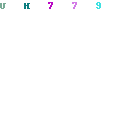
Our arrival into Phnom Penh proved to be an adventure in and of itself. After hours in a metal, hot-box tube of a boat (Tyler will describe the whole adventure more fully below), we landed to find that we needed to fit 11 adults with their baggage (about 13 big pieces) into a hotel van meant to hold eight people. We stood in disbelief around the van, but--sure enough--with lots of squishing and pushing, it all fit in and we hit the hot, bumpy road into the city.
Though we had a short time to draw any strong conclusions about Phnom Penh, I found it to be a fascinating city. It felt like a place that had it's heyday in the 60s and nothing had really been built since the 70s. Imagine French-style buildings, graying and falling into disrepair, with an additional floor at the top of shacks made of corrugated metal. Smoggy but somewhat beguiling. We also saw some of the decadent indolence you see referenced about the city, with almost every backpacker restaurant selling "happy" (AKA marijuana-laced) shakes and pizzas.
Of course, there is also the darker side, with lots of poverty, children wandering around all day trying to sell bootleg books to tourists, land mine victims and women with small children begging for money, orphanages full of children.

We managed to take very few pictures yet in Cambodia, but I think this gives some idea of the feel of the city

Me sweating and a view from the deck of our $4/night guesthouse
We hired a tuk-tuk to take us to the three sites we wanted to be sure to catch: S-21 (or Tuol Sleng) Prison of the Khmer Rouge, the Killing Fields and the Royal Palace.
I have to say upfront that I have a woefully thin knowledge of history in this region overall. Through all my schooling and world history classes, my teachers never managed to get much beyong WWII. I don't know if there was still general reluctance to cover issues like Korea or Vietnam by the time I was in school or if they really did just run out of time. It seems there are many lessons to be learned from experiences here that could be useful today.
We started at S-21. Originally a high school, it is a group of four large classroom buildings, complete with a grassy courtyard and some gym equipment. But it was turned to horrifying use as a prison for political prisoners. Of the 12,000 people brought there, only 12 survivors are known. Classrooms were walled to make cells smaller than the size of a twin bed, blood splatters still evident on the floor. Torture rooms with beds, electrocution equipment and leg irons fill a floor of one building with pictures of the last 14 victims found by the Vietnamese when they invaded the city, almost unrecognizable and surrounded by blood. Rooms and rooms are filled with mugshots of those picked up by the government--men, boys, women, children, monks. The killing seemed to be indiscriminant. It was horrifying. Even now, I feel ill and choked up just thinking about it.
Next we went to the Killing Fields. In a horrifying incongruity, the actual grounds intially feel peaceful and scenic--grassy field, trees. But as you walk around the grounds, you notice a honeycomb pattern of depressions--mass graves that have been excavated. Nearly 9,000 people have been discovered there, but many of the grave sites have not yet been explored. The government took about 17,000 people there to be led to pits and killed, generally with sharp blows to the head to save bullets. To hide their activities from the surrounding areas, they played music to cover the moans and sounds of killing. They covered the bodies with DDT to get rid of the stench and kill any who had survived the blows. Some graves were filled with headless skeletons. Some with only women and children. As you walk around, you can still see bits of clothing sticking up from the dirt and see bones that have been unearthed over time. It's hard to comprehend, and harder still to understand why so little is widely known about the second worst genocide of the 20th century.

Buddhist stupa memorial to the victims, filled with skulls

Independence and War Memorial Monument with many nagas--sorry for the blur, it was taken from a moving tuk-tuk!
Our final stop of the day took us to the Royal Palace in Phnom Penh, where the king resides. It had beautiful grounds and buildings, with a number of wats (or temples) with Buddhas, including a gold one with diamonds and one made of green Baccarat crystal.
Unfortunately, we listened to our Lonely Planet guide about not paying extra to use our camera on the grounds, so we don't have any pictures of our own. But here is the Throne Room and some of the grounds:


No comments:
Post a Comment